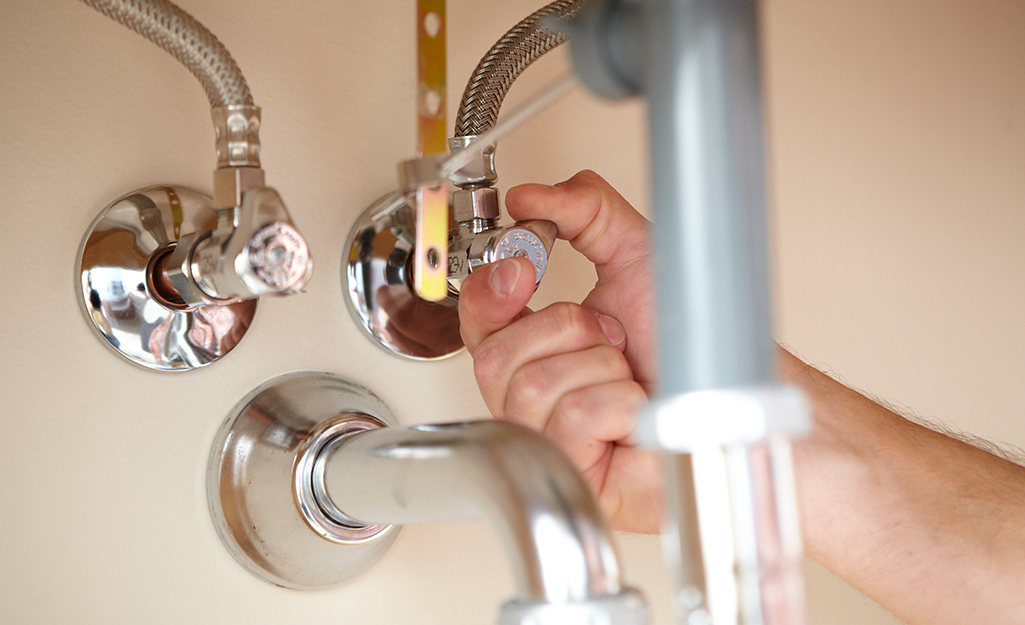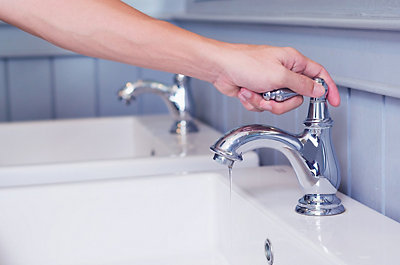How do you really feel about Leaky Faucets: Why They Happen & What to Do About Them?

Leaking faucets could feel like a minor inconvenience, but their impact exceeds just the nuisance of the audio. From wasting water to incurring unneeded financial expenses and health threats, disregarding a leaking faucet can cause numerous repercussions. In this write-up, we'll look into why it's essential to address this common family concern promptly and effectively.
Wastage of Water
Environmental Impact
Trickling taps add considerably to water waste. According to the Environmental Protection Agency (EPA), a solitary tap leaking at one drip per second can throw away more than 3,000 gallons of water per year. This not only strains water resources yet likewise affects environments and wildlife based on them.
Step-by-Step Overview to Repairing a Dripping Faucet
Devices Required
Prior to attempting to repair a dripping faucet, gather the necessary devices, including a flexible wrench, screwdrivers, replacement parts (such as washing machines or cartridges), and plumber's tape.
Common Faucet Issues and Their Solutions
Recognize the sort of tap and the details concern triggering the drip. Common troubles consist of worn-out washers, corroded shutoff seats, or malfunctioning O-rings. Describe manufacturer guidelines or on-line tutorials for detailed support on repair services.
Financial Costs
Enhanced Water Costs
Past the ecological influence, dripping taps can inflate water bills substantially. The accumulated waste in time translates into higher energy expenditures, which might have been prevented with prompt repair work.
Possible Home Damages
In addition, prolonged dripping can bring about harm to fixtures and surface areas surrounding the faucet. Water buildup can trigger staining, deterioration, and also structural concerns if left unattended, leading to extra fixing expenses.
Wellness Problems
Mold And Mildew and Mildew Development
The constant visibility of moisture from a trickling faucet creates an optimal atmosphere for mold and mold development. These fungi not just endanger interior air high quality yet additionally pose health threats, particularly for individuals with respiratory system conditions or allergic reactions.
Waterborne Conditions
Stationary water in trickling faucets can end up being a breeding ground for microorganisms and other microorganisms, enhancing the risk of waterborne conditions. Impurities such as Legionella germs thrive in stationary water, possibly resulting in serious ailments when ingested or inhaled.
Do it yourself vs. Expert Repair service
Advantages and disadvantages of DIY Repair Service
While some may attempt to repair a dripping faucet themselves, do it yourself fixings include their own set of obstacles. Without correct expertise and devices, DIY efforts can aggravate the concern or lead to incomplete repair services, prolonging the problem.
Advantages of Hiring a Specialist Plumber
Working with a specialist plumber ensures that the underlying root cause of the trickling tap is dealt with properly. Plumbings possess the expertise and equipment to identify and repair faucet problems successfully, saving time and reducing the threat of further damages.
Ecological Duty
Private Contribution to Preservation
Taking obligation for fixing leaking faucets lines up with broader efforts toward water preservation and ecological sustainability. Every individual's actions jointly make a significant influence on preserving priceless sources.
Lasting Living Practices
By focusing on prompt repairs and adopting water-saving behaviors, individuals add to sustainable living methods that profit both existing and future generations.
Safety nets
Routine Upkeep Tips
To prevent leaking faucets, execute routine maintenance such as cleaning aerators, evaluating for leakages, and changing damaged parts promptly. Furthermore, consider setting up water-saving gadgets or upgrading to extra efficient components.
Value of Prompt Repair Works
Addressing dripping taps as soon as they're observed stops more water waste and possible damages, inevitably conserving both water and money in the future.
Influence On Residential Or Commercial Property Value
Assumption of Well-Maintained Residential Property
Maintaining a residential or commercial property in good condition, including addressing upkeep concerns like leaking faucets, improves its regarded value and charm among possible purchasers or occupants.
Influence on Resale Value
Properties with well-maintained plumbing fixtures, including taps, command higher resale values in the realty market. Attending to leaking faucets can add to a favorable impact throughout home evaluations and settlements.
Final thought
Attending to a dripping faucet goes beyond plain ease; it's a crucial step toward conserving water, decreasing monetary prices, and guarding health and building. Whether with DIY repairs or expert aid, taking action to deal with dripping faucets is a small yet impactful way to advertise liable stewardship of resources and contribute to a much healthier, more lasting future.
How to Fix a Leaky Faucet: Step-by-Step Repair Guide
A leaky faucet may seem like a simple annoyance, but if it's not fixed promptly, that leak could cost hundreds to potentially thousands. From water damage to mold, mildew, and high water bills, even a tiny leak can be catastrophic if left unattended. Damage like this can even affect the overall value of your home, so it's important to take the right approach for leaky faucet repair. You may need the help of a plumber in some cases, but we've got a few tips you can try on how to fix a leaky faucet before calling the pros.
Four Faucet Types
When you're learning how to fix a leaky faucet, the first step is knowing what kind of faucet you're working with! There are four common types.
Cartridge Faucets
Cartridge faucets come in one- or two-handled varieties. In one-handled cartridge faucets, hot and cold water combines in a single cartridge. In the two-handled versions, hot and cold water are controlled separately and mixed in the faucet.
Ball Faucets
Ball faucets have a single lever you push up and down to adjust the pressure and rotate to change the temperature. A slotted metal ball controls the amount of water allowed into the spout.
Compression Washer Faucets
They're the oldest type of faucet, but they're still used in many homes — especially older ones. Compression faucets have two separate handles that, when turned, raise or lower the washer that seals a water valve. This valve stops water from flowing through the faucet when it is turned off.
Disc Faucets
Disc faucets rarely need to be repaired due to their maintenance-free design. The water flow is controlled by two discs — the upper one raises and lowers against a fixed lower disc, creating a watertight seal. If your disc faucet starts leaking, you may need to replace the seals or clean residue buildup from the inlets.
Fixing a Leaky Faucet
Step 1: Turn Off the Water
Whether you're learning how to fix a leaky bathtub faucet or how to fix a leaky kitchen faucet, always turn off the water supply to your working area when you're fixing a leak. The last thing you want is a flood added to your list of things to fix.
Look for the shutoff valves below your sink or around the tub and turn them clockwise to stop the water flow. If your faucet doesn't have shutoff valves, you may need to turn off the water for the whole house. Check to make sure it's off by turning the faucet on. If nothing comes out, you're ready to start the repair.
Step 2: Take Apart the Faucet
How you disassemble your faucet depends on the type of fixture you have. You can use a flathead screwdriver to remove the caps on top of the handle or handles for cartridge and compression faucets. Inside, you should see handle screws. Unscrew these with a screwdriver to remove the handle.
Disc- and ball-style faucets will typically have an inlet screw near the handle, and removing that will reveal the interior of the faucet.
Detach the Valve Stem
For cartridge- and compression-style faucets, you'll see the inner valve stem or cartridge once you remove the faucet handles. If you have a compression faucet, unscrew the brass valve stem. If you have a cartridge faucet, pull out the cartridge. If your cartridge has been in place for a while, it may require some tools or extra force to remove it due to mineral deposits.
Examine and Replace Parts
Once you've removed the parts, check them out to confirm what needs to be replaced. You may see corroded rubber washers, O-rings, stems, or cartridges. On a ball-style faucet, check the seats and springs for damage.
If you need to repair a leaky disc faucet, check the inlet and seals on the lower disc.
Once you determine what parts must be replaced, visit your local hardware store. Bring the damaged parts with you to ensure you can purchase the correct components to replace them.
Clean Valves and Faucet Cavity
If you've removed a stem or cartridge, you may notice mineral buildup in the faucet's threads. Use white vinegar to clean the valve seat by soaking it for a few minutes, then scrub it away with a soft toothbrush and rinse with warm water. You can also clean the interior of the faucet in the same way.
Reassemble the Faucet
Once your faucet is cleaned and the required parts have been replaced, it's time to reassemble it. Put the pieces back together and slowly turn the water supply back on. Doing this slowly is crucial because too much initial water pressure can damage the new hardware you've just installed.
https://homewarranty.firstam.com/blog/how-to-fix-leaky-faucet

We were shown that editorial about Why It's Important to Fix Leaky Faucets from a friend on another web property. Do you know about somebody who is excited by the topic? Feel free to share it. Bless you for being here. Don't hesitate to check up our site back soon.